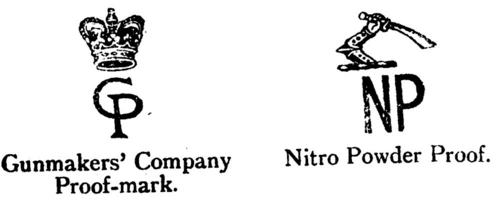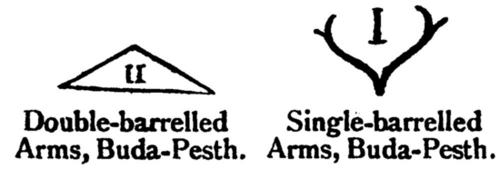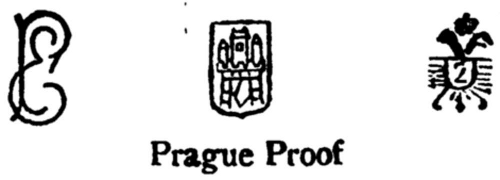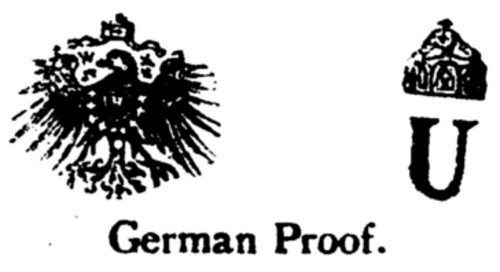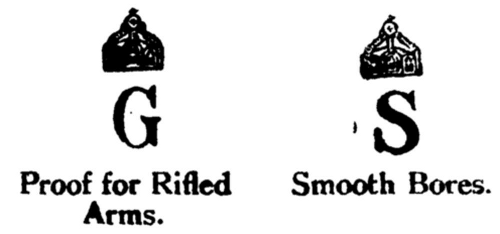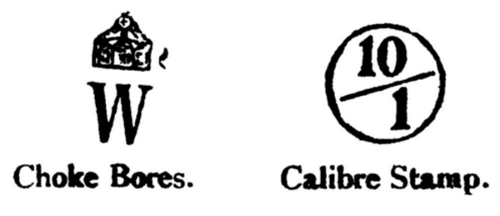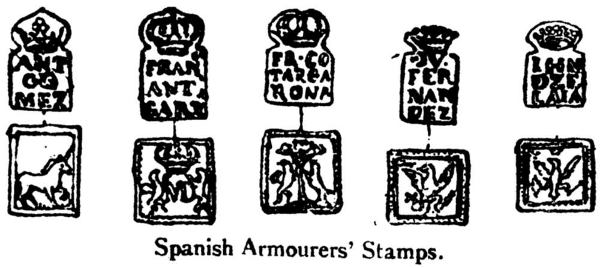The following information comes from The Book of the Pistol and Revolver by Hugh B. C. Pollard. The Book of the Pistol and Revolver is also available to purchase in print.
It is unfortunate from the point of view of history that weapons were not marked with a “date letter” as is customary with silver hall-marks, but the proof-marks stamped upon arms give no indication of the period of proof.
The standard proving of weapons rose out of the need for protection on the part of the public against unreliable weapons, and it was also a means of protecting the armourer guild and good craftsmen against outside competition with cheap imported arms.
Originally evolved by the armourers themselves, the system of proof was in nearly every arms-producing country taken over by the Municipality or the State, who imposed a series of stringent by-laws and penalties on any who sought to evade the prescribed tests. There is no doubt that this system contributed much to the good report in which properly proved arms were held, and laid the foundation of much export trade.
Proof marks are the official stamps or ciphers showing that a barrel has been properly tested with the prescribed excess charges of powder and ball that allow a large factor of safety to the user.
These marks are customarily the cipher of the gunsmiths’ guild and the mark of the State or city.
Armourers’ marks are quite distinct from proof-marks, and comprise the private marks, ciphers, stamps, or signatures of the individual armourers or gunsmiths. They are often found in combination with proof-marks, and still more frequently on unproved arms made in countries where no official proof was existent. Most specimen marks are of this nature, and it is no unusual thing to find the marks of two different smiths upon the same weapon, one man signing the lock work, the other being the barrel maker.
A great deal of painstaking research work is necessary before a list of armourers’ marks applied to pistols can be compiled, but I have every hope of preparing such a list at a future date when peace is restored in Europe and the great museum collections are accessible. Besides these national collections, there are many municipal and private galleries whose curators have formed most excellent catalogues, but in the main this knowledge is uncoordinated. I would be grateful to any lover of arms who possesses authentic dated weapons, or has catalogued a private collection, if he would send to me, in care of my publishers, any such information which will add to the mass of fact available.
The system of proof in Great Britain was as follows:
In England, the second charter of the Gunmakers’ Company granted in 1672 marked the beginning of the official proving of arms, but it did not apply to weapons made elsewhere in the Kingdom, provided they were not offered for sale in the London market.
Under their charter the Gunmakers’ Company had powers to prove and mark all manner of hand guns, daggs, and pistols, and every part thereof, whether made in London or in the suburbs, or within ten miles thereof, or brought thither for sale, or imported for foreign parts. To establish this rule, they constructed a proof house near the City of London.
Their cipher or mark was the letters G.P. interlaced, and surmounted by a crown. The viewer’s mark was a capital V, also surmounted with a crown. These two, and sometimes the maker’s private mark, may be found on many old weapons.
Birmingham had also a proof, but this test was not obligatory, and makers evaded the tests.
Birmingham did not establish its proof houses until 1813, and though another Act was passed in 1815 to strengthen the former, the laws were not stringent enough, and the Birmingham proof was not recognized as sound until much later, when the Act of 1855, still unsatisfactory, and the eventually satisfactory one of 1868, was passed.
In 1888 it was decided by a joint meeting of the Gunmakers’ Company and the Birmingham Guardians that a new supplementary proof for smokeless powder should be instituted in 1893, 1896, and 1904; the rules were further adjusted to allow for new powders.
A voluminous schedule of rules and scales of charge for the proof of various kinds of small arms is in existence, and the proof is the same at London and at Birmingham; though different proof marks are employed. Modern pistols and revolvers are proved in their last stage of manufacture when complete with action and in firing order. Revolvers are marked on barrel, on the frame, and on each chamber.
Liege, in Belgium, has always been celebrated for its weapons, and established its proof house as a municipal enterprise on May 10, 1672, when it was laid down that barrels should be marked with the stamp of the city, and unproved weapons might not be sold under pain of a fine of a gold florin and the confiscation of the unproved barrel.
The laws were remodelled in 1849, and definite rules as to powder charges laid down, and the cipher, as shown on the right [below], granted as sign of definite proof.
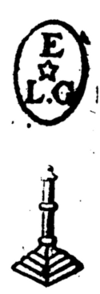
In 1849 the additional ciphers for provisional proof the letters E.L. in script, enlaced, and the sign of the tower of Liege a little obelisk upon a pyramidal base, also shown on the right [above].
Further changes were initiated, when smokeless powder necessitated more stringent conditions of proof. These marks are the Belgian Lion rampant over the letters S.C.H. or E.C.
St. Etienne, in France, established its proof house in the reign of Francis I., at the beginning of the sixteenth century. Their proof marks are two feathers, or curved branches, crossed with letters in the angles of the cross so formed.

The first cipher is the crossed branches surmounted by a crown, and with a cross or star in the three other angles. Underneath the whole appears the word St. Etienne. The second is the crossed branches, with the letters A.E. The third is a plain stamp, with the letters A.V.E. The fourth the crossed branches, with the letters S.E.E., and a cross in their angles. The fifth a crown, with three crossed spikes set over a capital E.
PLATE OF PROOF MARKS
English Proof-Marks
London Proof-Marks

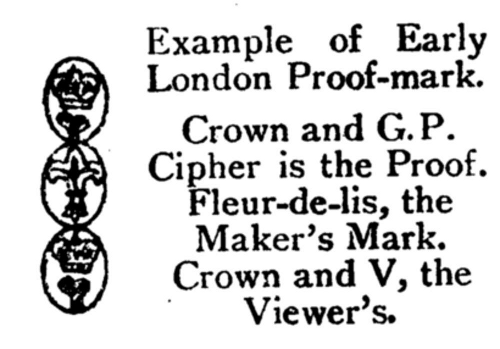

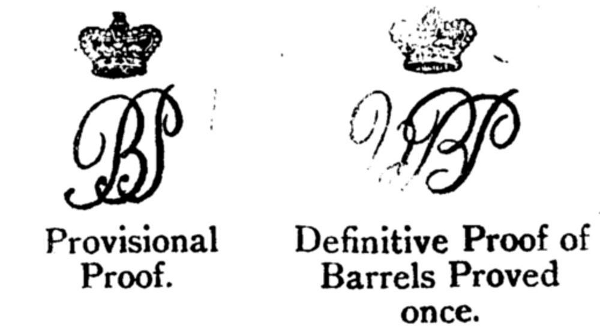

Belgian Proof-Marks


French Proof-Marks
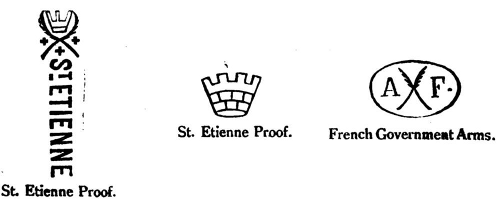


Austro-Hungarian Proof-Marks
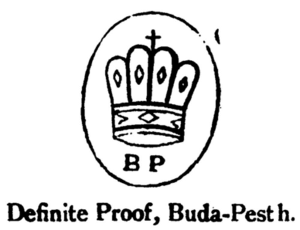
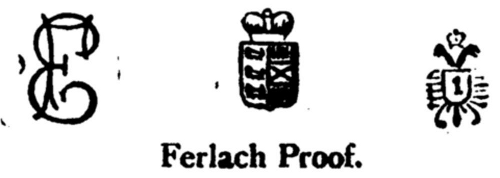
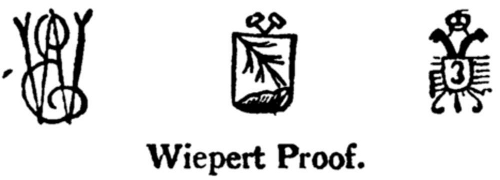
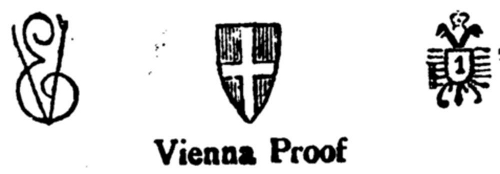
German Proof-Marks
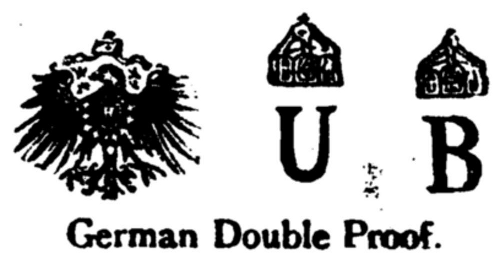
Spanish Armourer’s and Proof-Marks
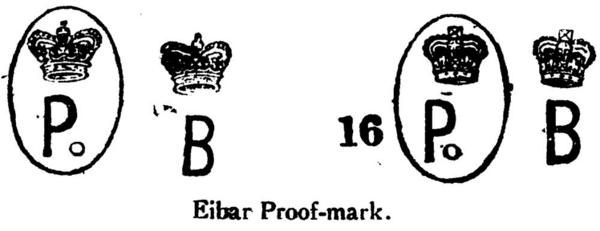
Other French towns had their special marks, such as—
Paris—a cipher of E. and P. set back to back (as shown below).
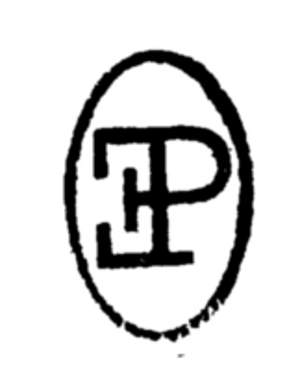
Sailleville—an E. reversed set in a square stamp (as shown below).
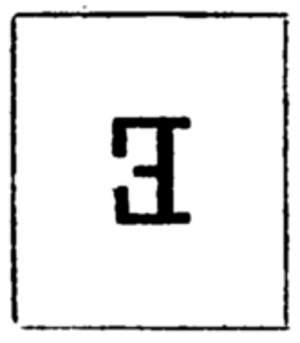
Chatellerault—a capital E.
Mutzig-a star above a capital E.
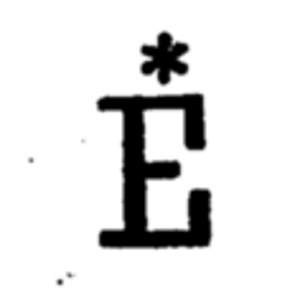
Tulle—a three spiked crown or mitre above a capital E (as shown below).
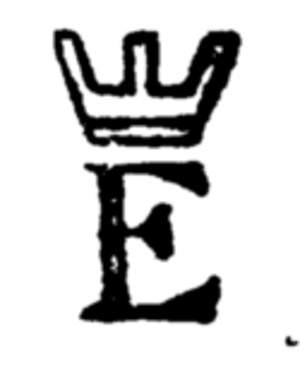
The Standard mark for French Government arms was a crown above an E., and this crown has a three looped top, with the orb or ball and cross as ornament, and is so distinguished from the cross-crested crown of some St. Etienne weapons.
Austrian arms were marked with the double eagle, and later with the letters Wn 78; a variety of private marks of manufacturers are also in use.
Spain depended for long upon the proof of individual armourers, and most Spanish barrels were marked with the stamp of the maker set in a square or oblong block under a crown. These marks have all the characteristic appearance of a rectangle, with a small blob at the top rather like a tied up sack of corn. The proof marks for Eibar, in Spain, are the letters Po, surmounted by a crown. In some cases this cipher is also preceded by the figures 16, and followed by a capital B., also surmounted by a crown.
U.S.A.—Most pistols exported from the United States are not proof marked in their country of origin. Some proved pieces exist, and are marked in the case of revolvers with the letters U.S., in the case of other arms with the letters V.P. and an eagle’s head.
